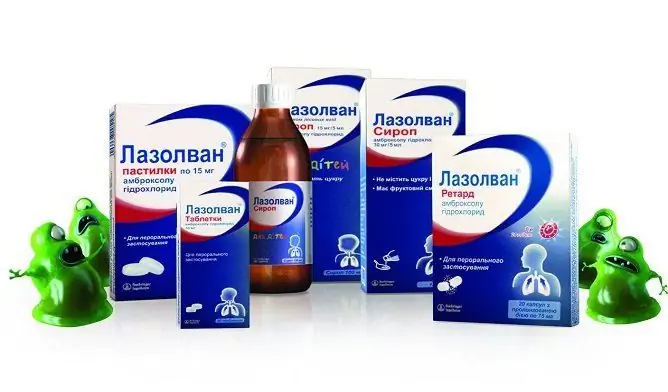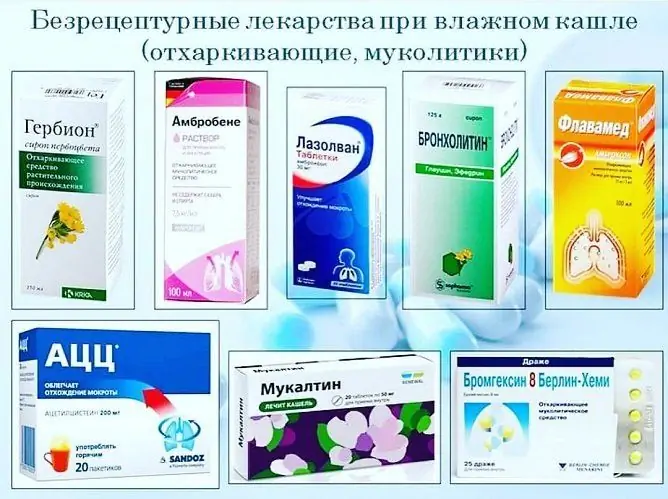- Author Rachel Wainwright [email protected].
- Public 2023-12-15 07:39.
- Last modified 2025-11-02 20:14.
Non-steroidal anti-inflammatory drugs for osteochondrosis
The content of the article:
- Non-steroidal anti-inflammatory drugs for the treatment of osteochondrosis: how they work
-
Indications and contraindications
- When NSAIDs are indicated
- Contraindications
-
System Tools
- Pills
- Injections
- Local funds
- Adverse reactions
- How to choose a medicine
- Is it possible to cure osteochondrosis with NSAIDs
- Video
The use of medications is one of the main components of the treatment of osteochondrosis. Non-steroidal anti-inflammatory drugs for osteochondrosis do not affect the mechanism of development of the disease, but they can stop pain and reduce inflammation. These drugs can be used in the form of tablets, injections, gels and ointments.

Non-steroidal anti-inflammatory drugs are not able to eliminate osteochondrosis, they are used to relieve pain
Non-steroidal anti-inflammatory drugs for the treatment of osteochondrosis: how they work
Pain syndrome is the main symptom of spinal osteochondrosis at any stage. To reduce pain, non-steroidal anti-inflammatory drugs (NSAIDs, non-steroidal anti-inflammatory drugs, NSAIDs) are used.
The mechanism of action of NSAIDs is associated with the suppression of the enzyme cyclooxygenase (COX), which is involved in the formation of prostaglandins - pro-inflammatory mediators. There are two types of cyclooxygenase in the human body:
- COX-1 - "physiological". It is constantly in the body. Responsible for gastric mucus production, platelet function and renal blood flow.
- COX-2 - "pathological". Normally absent, begins to function only with inflammation.
Depending on what type of COX blocks the drug, several groups of NSAIDs are distinguished - non-selective and selective. Representatives of the first group inhibit both COX-2 and COX-1, which often leads to damage to the gastric mucosa and the development of other adverse reactions. Selective NSAIDs are a new generation of medicines that only block COX-2, which activates inflammation and pain. In this regard, adverse reactions when using this group of drugs occur less frequently.
Indications and contraindications
NSAIDs, like other medicines, should be prescribed by a doctor if indicated. Before using them, you need to carefully study the list of contraindications and make sure they are absent.
When NSAIDs are indicated
The main indication for the use of these drugs in osteochondrosis is the presence of pain syndrome. NSAIDs can be used regardless of the stage of osteochondrosis and the presence of other symptoms.
Contraindications
It is not recommended to use drugs from the NSAID group in the following conditions:
- Erosive and ulcerative diseases of the gastrointestinal tract - erosive gastritis, gastric ulcer and duodenal ulcer. If necessary, preference should be given to selective NSAIDs.
- High risk of developing cardiovascular diseases - atherosclerosis, blood clotting disorders. If necessary, preference should be given to non-selective NSAIDs (Ibuprofen, Naproxen).
- Diseases of the liver and kidneys in the stage of decompensation.
System Tools
For the treatment of osteochondrosis, drugs of systemic action are often used - intramuscular, intravenous injections and tablets. Systemic drugs are more effective at relieving pain and inflammation as they enter the general bloodstream. Their disadvantage is the more frequent development of side effects.
Pills
Oral NSAIDs are often prescribed. Their action occurs more slowly than with injection - after 20-30 minutes. But oral administration has a number of advantages:
- can be taken at home;
- non-invasive method;
- local complications (hematomas, infection) do not occur.
Tablets that are used to relieve pain can be classified as selective and non-selective NSAIDs, as well as have different degrees of analgesic effect.

Ibuprofen is a non-selective NSAID drug
| NSAID group | Drug names |
| Non-selective |
List of NSAIDs (from drugs with the most pronounced analgesic effect to weaker ones): Ketorolac (Ketalgin, Ketanov); Diclofenac (Diklak, Dikloberl); Indomethacin (Metindol); Ibuprofen (Ibuprom). |
| Selective |
Celecoxib (Celebrex); Meloxicam (Movalis); · Etodolak (Aetol Fort). |
Injections
For the treatment of osteochondrosis, injections (intramuscular, intravenous) can be used. Their advantage is faster action, as they immediately enter the bloodstream. When administered intravenously, the action begins in 2-4 minutes, with intramuscular administration - after 5-10 minutes.
Parenteral administration of drugs also has a number of disadvantages:
- Difficulty in use - in most cases, injections are not done at home.
- Invasiveness - there is a possibility of infection, vascular damage and hematoma formation.
Preparations that are available in the form of ampoules for injection are also divided into selective and non-selective NSAIDs. The most common NSAIDs include:
- Ketorolac (Ketalgin, Ketanov);
- Diclofenac (Diklak, Dikloberl);
- Meloxicam (Movalis).

With severe pain syndrome, Diclofenac is used in the form of injections
Local funds
Topical NSAIDs are often prescribed to treat pain in joint and spinal diseases. They act weaker, but at the same time practically do not cause side reactions.
List of topical NSAIDs:
| Active substance | Medicines names |
| Diclofenac |
· Voltaren emulgel; Diclac gel; · Diclogen gel; · Diclomec gel; Doloxen gel; · Clodifen gel. |
| Indomethacin |
· Indomethacin; · Indomethacin Sopharma ointment; · Indomethacin-Acri; · Indovazin. |
| Nimesulide | Nise gel. |
| Ibuprofen |
· Long gel; · Long cream; Ibalgin cream; · Northafen; · Nurofen. |
| Ketoprofen |
· Arthrocol; Valusal; · Ketonal; · Ketoprom; · Ketum gel. |

Artrocol gel contains ketroprofen as an active ingredient
Adverse reactions
The most common side reactions are from the gastrointestinal tract, especially with non-selective NSAIDs. The damage to the stomach and intestines is associated with the suppression of COX-1, which is responsible for the production of mucus and the protection of the mucous membrane of the digestive tract. The most common manifestations of the gastrointestinal tract include:
- abdominal pain;
- nausea, vomiting;
- diarrhea;
- gastrointestinal bleeding.
Adverse reactions from the cardiovascular system and kidneys may also develop. Selective NSAIDs affect the function of the vascular endothelium and the blood coagulation system. In this regard, the risk of myocardial infarction and stroke may increase. Long-term use of NSAIDs is also associated with the formation of analgesic nephropathy.
How to choose a medicine
Not all NSAIDs are equally good, they differ in the following characteristics:
- group - selective or non-selective;
- release form - ampoules for injections, tablets, ointments;
- severity of anti-inflammatory action;
- the severity of the analgesic effect.
As a rule, when choosing NSAIDs, the doctor takes into account several points: the presence of concomitant pathology, the stage of the disease and the severity of pain.
In the presence of diseases from the gastrointestinal tract, preference is given to the selective NSAIDs Meloxicam, Celecoxib), since they do not suppress COX-1 and do not damage the gastric mucosa. With a high risk of cardiovascular disease - Ibuprofen or Naproxen.
In the early stages of the disease, when the pain is not severe, NSAIDs with a weak or moderate analgesic effect (for example, Ibuprofen) are used. You can also use medications in the form of gels and ointments.
If the pain is severe, drugs with a pronounced analgesic effect (Ketoprofen, Ketorolac) are taken.
Is it possible to cure osteochondrosis with NSAIDs
It is not recommended to limit treatment to only one group of medicines. The use of NSAIDs is usually combined with other drugs and non-drug treatments:
- chondroprotectors;
- muscle relaxants of central action;
- B vitamins;
- physiotherapy;
- physiotherapy;
- massage and manual therapy;
- spinal traction.
The use of NSAIDs refers to the symptomatic treatment of osteochondrosis. That is, drugs from this group do not cure the disease, but only fight its symptoms.
Video
We offer for viewing a video on the topic of the article.

Anna Kozlova Medical journalist About the author
Education: Rostov State Medical University, specialty "General Medicine".
Found a mistake in the text? Select it and press Ctrl + Enter.






